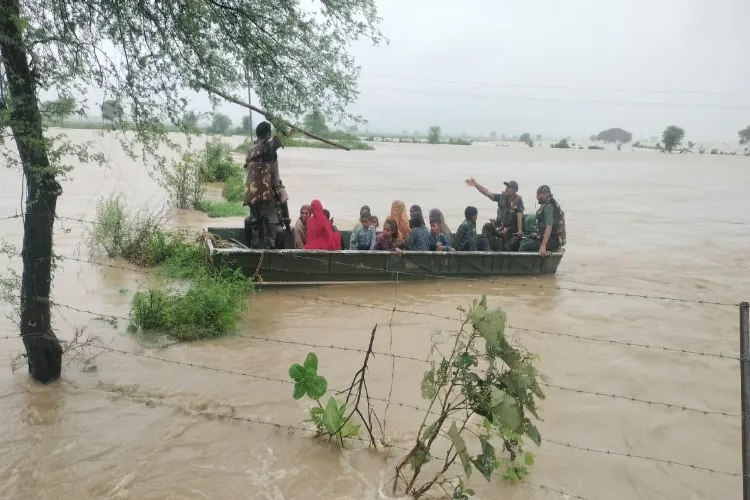
Chandigarh
More than 5,000 civilians were rescued and 21 tonnes of relief material were provided to the people in Jammu, Punjab, and Himachal Pradesh affected by floods, the army said on Monday.
The Western Command of the Indian Army has been conducting extensive Humanitarian Assistance and Disaster Relief (HADR) operations in the flood-affected states.
A total of 47 columns, including army aviation and Indian Air Force helicopters, were activated along with formation engineers, medical, and communication resources to provide immediate relief, an officer said.
The information was given at a press conference addressed by Major General Puneet Ahuja and Colonel Iqbal Singh Arora at the Western Command headquarters in Chandimandir in Panchkula.
The army operations started on August 16.
"Troops, engineers, medical detachments, and aviation assets were mobilised at short notice to safeguard lives and restore essential services," said Col Arora.
Flood relief columns were fully prepared, trained, and equipped to undertake relief missions, he said.
"Aviation assets of both Indian Army Aviation and further supported by IAF ensured timely evacuation of stranded civilians and delivery of critical supplies," he said.
A round-the-clock flood control monitoring cell has been established at each headquarters, to monitor the water levels at major headworks, including Bhakra Nangal dam, Ranjit Sagar dam and all other critical points, he said.
He said that the operations are being conducted in close coordination with the civil authorities, NDRF and SDRF.
"The integrated approach ensured optimal use of resources and timely assistance to the affected population, reflecting the nation's resilience and unity during the crisis," the officer said.
"A total of 47 columns have been mobilised, comprising personnel from engineers, medical detachments and communication teams, also in addition to the main rescue teams," he said.
Twenty aircraft, including Advanced Light Helicopters, reconnaissance and observation helicopters, Mi-17, and a Chinook, were engaged in round-the-clock missions, he said.
"More than 5,000 civilians and 300 paramilitary forces personnel have been rescued from inundated areas," he said.
Approximately 21 tonnes of relief material, including food packets, medicines, and essential commodities, have been delivered on the ground and through aerial drops at cut-off locations, the officer said.
Col Arora said the communication teams laid over 2 km of optical fibre cable on August 27, restoring mobile connectivity and enabling smooth coordination of relief measures.
The army engineers on August 29 constructed a Bailey bridge at Jammu Tawi within 12 hours, restoring a vital lifeline for the city, he said.
Punjab is inundated with massive floods, caused by the swollen Sutlej, Beas and Ravi rivers and seasonal rivulets due to heavy rain in their catchment areas in Himachal Pradesh and Jammu and Kashmir.
Villages worst-affected by the floods were in Gurdaspur, Pathankot, Fazilka, Kapurthala, Tarn Taran, Ferozepur, Hoshiarpur and Amritsar districts.
Heavy rain and flash floods in Jammu and Kashmir have left a trail of death and destruction.
More than 130 people have been killed, over 120 injured and 33 are untraceable following cloudbursts, landslides and flash floods in Kishtwar, Kathua, Reasi and Ramban districts since August 14.
Record rainfall during August 26-27 also caused flash floods in low-lying areas in Jammu and other plains, causing grave damage to public and private infrastructure.
READ MORE: Baharul Islam, the North Star of social work in Greater Bengal
Himachal has also faced the brunt of nature's fury with multiple flash floods and cloudbursts and several major landslides, which have claimed several lives.
